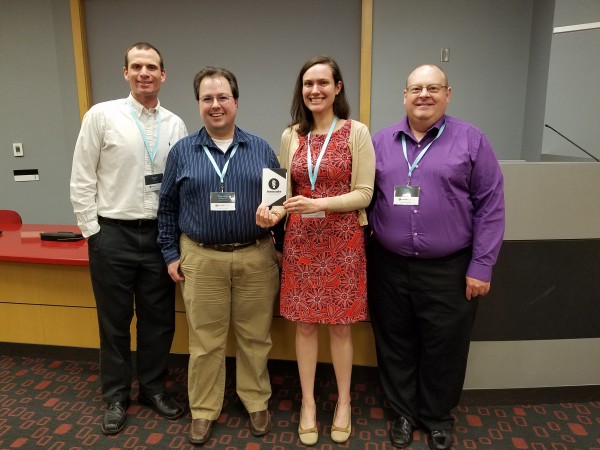Kudos to Lauren Hensley for Saving Students $37,000 Annually

Lauren Hensley oversees a class called Online Learning Strategies and Skills, better known as ESEPSY 1159 here at The Ohio State University. In this class, students learn how to apply strategies for college success in contexts where learning occurs online. Main topics the class covers are communication strategies, time management, active reading and listening, online searching and source evaluation, and motivation regulation. This course supports students’ success as online learners whether they are pursuing an online course or degree program, learning from assigned course materials that are accessed through the web, or seeking out online resources to complement a class that otherwise occurs face-to-face. Approximately 450 students from all majors, ranging from new first-year students through graduating seniors take the course each year.
Hensley noticed that the class needed a change when students expressed that the information they were gaining from the book was not as valuable as the actual cost of the book. Hensley along with her teaching team took action and now are in the process of turning this class from book-based material to all online learning materials. This will save students approximately $37,000 annually! Throughout this process, Hensley has been taking her students’ input into consideration, as they are the ones who will benefit the most from this course redesign.
Furthermore, Hensley is an asset to this university and was even encouraged to share her knowledge at our Innovate conference in May. Check out the information below to learn more about Hensley’s project and her Innovate experience.
Why did you decide to pursue this project? I decided to pursue this project when the reasons for changing began to outweigh the reasons for keeping things the same. Students in ESEPSY 1159 complete a thorough evaluation at the end of the semester. Over a period of about three years, one theme became more and more prominent: students were saying that what they gained from the book was not worth the cost. Over that same period, my resistance to basing the course on online materials lessened as I encountered an increase in the quality of online materials related to core course topics, such as motivation, self-regulation and learning strategies. It also helped that all six members of the ESEPSY 1159 teaching team were on board with the idea of replacing the textbook, and three of them—Ken Matthias, Jacob Bane and Timothy Lombardo—were able to commit to working on the grant activities more in depth. With that combination of factors, I had both the motivation and the team necessary to move forward.
Can you tell us a bit about the materials that you’ve found thus far while working on your project? Have these resources met your needs and expectations in terms of quality and credibility? I used to be concerned that online materials would not be rigorous enough to replace the traditional textbook. Instead, I’m finding that online content is not only solid but also engaging. Bloggers, YouTubers and authors are combining research, theory and personal experience in their work, and we’ve benefited from this. The online materials are addressing the topics of the course more adeptly and are more relatable than the print materials I’ve used or considered using in the past. Because the course is focused on helping students become more efficient and engaged learners, one of the topics we cover is procrastination. It’s one thing to read about procrastination from authors who sound like they’ve never had to struggle with this problem themselves; it’s another to watch a TED Talk on the topic that makes you laugh out loud, read about research-based strategies for overcoming procrastination from the Harvard Business Review, and browse through online tools that can help you get a handle on your time.
How has the input of students helped to shape the new course resources you’ve put together? We’re making these changes for students, so their input has been key. When we first decided to apply for the ALX grant, we reviewed the course evaluation again for students’ comments about what elements of the course they felt were most valuable to their learning. This feedback let us know that there were certain aspects of the textbook that students appreciated—examples, clear organization and bulleted lists—that we would want to include in our new materials. It also let us know that students valued (and wanted more) videos, online readings and instructor-developed materials. As we started to shape our plethora of resources into something coherent, we were struggling with the question of what format to use. We asked students to review a couple of different mock-ups and provide their feedback. Thanks to their input, we decided to use interactive slide decks as a way of tying all of the materials together.
Why should your peers apply for an ALX grant, and what advice do you have for others thinking about reimagining their textbooks and course materials? Applying for an ALX grant is a great way to push yourself to keep your course materials relevant, re-engage with the current content in your field, and boost the chances that more of your students will actually read. It’s not for the faint of heart, though. Once you start, you realize how much you care about doing it right. This will make the project consuming in a good way, but it will also demand a lot of time. Building a team, securing a course release, funding a GA, or finding a quieter time of year for the bulk of the work can help keep the project attainable. Another piece of advice: you may think you know how to search, but it’s amazing what a librarian can find that you had no idea existed. Our liaison librarian, Amanda Folk, made us aware of relevant open online textbooks, suggested videos on topics where we were coming up dry, and provided a fresh perspective overall.
How was your experience at Innovate? Is there anything from your presentation that you would like to share? Working together to fit the content into a single lightning round session at Innovate was exhilarating. When Ken, Jacob, Tim and I applied for Innovate in early February, we were still in the honeymoon period of having received an ALX grant. Learning of our session’s acceptance in March was another “Go team!” moment, but it also provided a bit of healthy pressure to keep up with our timeline. One thing that we covered in the presentation—and that we learned while kicking our project into gear so that we’d have something to present in May—is that there’s a temptation to include as many relevant resources as possible. You tend to want to keep looking just in case another resource could say something more or something better. Here’s the thing: New materials will always be published online. You may never get to consider all of them. And that’s okay. Set deadlines and make yourself move to the next stage. It’s similar to writing a paper; at some point, you have to stop gathering and reading so that you can start creating and see the real progress.
In the session, we also encouraged participants to consider their “Why?” If you want to undertake a project like this and have the motivation to see it through, it’s important to acknowledge your reasons for not making a change in the past and to weigh these against your reasons for wanting things to be different. If you’re still on the fence, ask yourself what it would take to make the change (such as a course release, grant funds or collaborators), and see if you can make this happen.
Would you like to follow in Lauren's footsteps and transform your courses using open and affordable materials? Apply for an ALX grant today!





